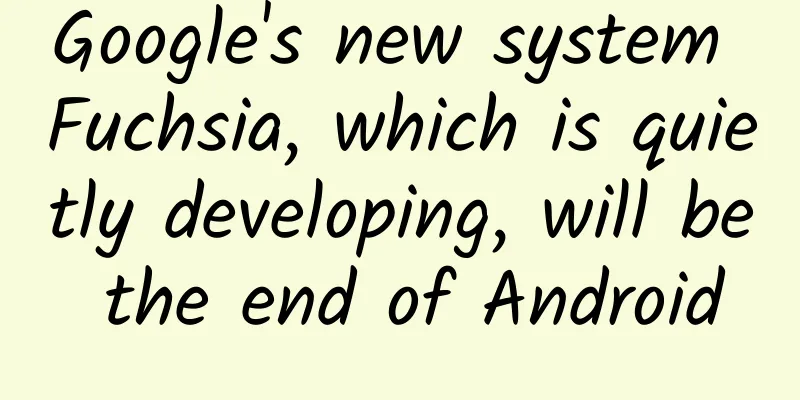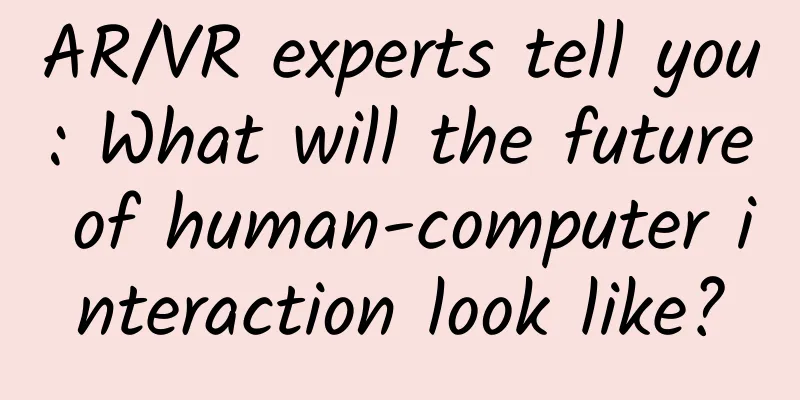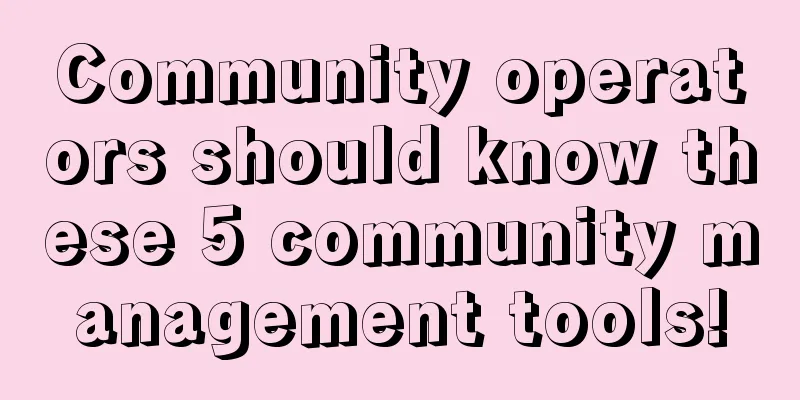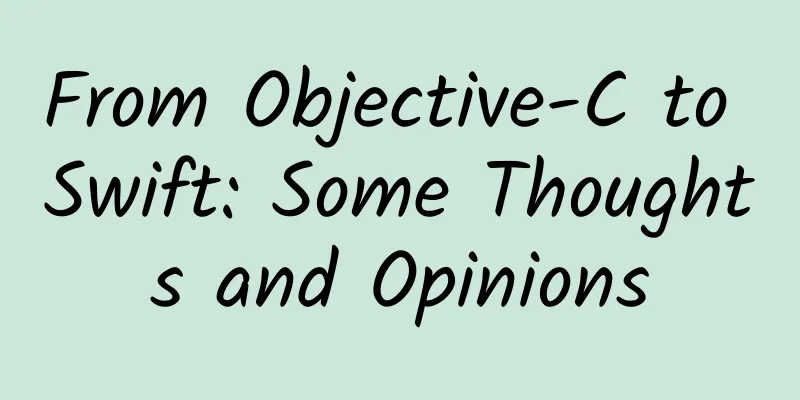Google's new system Fuchsia, which is quietly developing, will be the end of Android

|
The competition in mobile operating systems is quietly entering a new era. As early as 2016, someone found relevant information about the quietly released Fuchsia OS on Github. Although Google had not officially released it at the time, the relevant code showed that it was an operating system that could run across platforms, including "car entertainment media systems and embedded devices such as traffic lights, digital watches, smartphones, tablets and personal computers."
Considering that there have always been a large number of informal experimental projects within Google, Fuchsia OS has not had much presence or received much attention for a long time. However, just two days ago, Fuchsia OS's developer website Fuchsia.dev was launched, indicating that this cross-platform operating system project has entered the next stage. More than just an Android alternative Unlike the Android and iOS we use now, Fuchsia has a brand new operating system kernel, Zircon. Because it is derived from Google's bloodline and exceeds the performance of existing systems, as well as the typical Material Design style in the leaked screenshots, people tend to believe that its goal is to replace Android and Chrome OS. Completely abandoning Android is an extremely difficult task for the existing mobile ecosystem and major manufacturers, and only a few leading companies, such as Google itself, can do this. So, without giving up the existing ecosystem, a thorough innovation was carried out to eliminate the various problems that have accumulated in Android over the years, such as completely getting rid of Java and issues related to Java, as well as previous disputes related to the Linux kernel. In Fuchsia, everything has been rewritten. This is like Huawei's self-made Hongmeng operating system, the nature is the same, but the impact is undoubtedly more far-reaching. In early 2018, Google began to allow Fuchsia developers to use Google's own Google Pixelbook notebook to test and develop Fuchsia OS. Two months before that, Fuchsia also began to support iOS development language Swift. In mid-2018, Fuchsia-related code began to appear in Android's ART (Android Runtime Environment) code. In other words, ART may have been ported to Fuchsia - in the future, Fuchsia will support Android applications. Does this sound familiar? Smooth transition in development and design From the previously leaked Fuchsia user interface, we can clearly see the Material Design design, and the inheritance and compatibility relationship between Android and Fuchsia seems very clear. In fact, this migration and transition does not stop there. Fuchsia's system is written using Flutter, an open source software toolkit launched by Google itself. Flutter was launched as early as 2015. Its core engine is written in C++ and uses Google's Skia graphics library to provide rendering. Combined with the SDK, it supports application development on both iOS and Android platforms. The output applications can achieve a rendering performance of 120FPS, which is extremely powerful and efficient. In fact, you may not have a clear concept of Flutter, but you have already used applications developed with Flutter. In the Flutter case list, you will see many familiar company names, such as Alibaba, JD.com, and Tencent. The Android and iOS versions of Xianyu, a well-known second-hand trading platform, are developed using Flutter. JD Finance and Tencent's NOW live broadcast app are also developed using Flutter. For the Fuchsia operating system that supports the ART environment, Flutter toolkit and Swift language, it means that it is very likely to take over the mobile application ecosystem in the future. Of course, the current Fuchsia OS is not strong enough, but there are many big names and star developers in its core development team, making plans for this mobile operating system of the future. Experts join Fuchsia development team According to Hacker News, well-known developers Travis Geiselbrech and Brian Swetland, two experts in the field of operating systems, have joined the Fuchsia development team. The development and construction of operating systems requires a considerable degree of professional skills and a large amount of knowledge reserves, as well as sufficient accumulation of experience, and the resumes of these two people happen to be among the best. Travis Geiselbrech has been creating the most forward-thinking operating systems for almost a lifetime, and his resume is almost entirely public, which should give you an idea of the value of the choices he's making at this moment. In the 1990s, Travis participated in the development of the famous BeOS, which was almost the largest multimedia operating system at the time, surpassing Windows and Mac OS 9 of the same period in many media technologies. If it were not for Jobs, Apple would have eventually acquired Be, and the kernel of today's macOS should be built on BeOS. After that, he joined Danger and participated in the construction of HiptopOS operating system. Just after entering the new century, the operating system he developed was based on Java and could push update packages online through the cloud. The mobile phone using this operating system was called Sidekick, which had a lightweight software store, a full keyboard and a rotating screen, and quick interaction almost like a game console. You will see this phone in many famous American TV series before 2005 - it is synonymous with young people and fashion. Think about it carefully, what functions did mobile phones before 2005 - including PDAs and so-called smart phones have? At the operating system level, few were so radical. Later, Travis also participated in the development of webOS. As for the forward-looking nature of this operating system, there is no need to elaborate - almost all the basic interactions of iOS and Android that we use today are inherited from webOS, and are even worse than the former. This happened 10 years ago.
Since then, Travis has participated in the development of Android and iOS. It can be said that he is a deep participant, witness and creator of the evolution of modern mobile operating systems. Similarly, Brian Swetland has been deeply involved in the development and promotion of many of these operating systems. What's more hardcore is that Brian has been manually extending the life of BeOS, an operating system that should have died 20 years ago. He has been involved in the development of BeOS's subsequent open source project Haiku OS, allowing BeOS to be reborn on the Linux kernel. In addition to them, with the support of Google, Fuchsia OS may be the Next Big Thing of the entire industry. Fuchsia’s ambitions Fuchsia's short-term goal is of course to replace Android, but at the same time, it is evolving towards a broader market - wearable devices, smart homes, mobile phones, computers, and even its logical competitors iOS and macOS. Its high efficiency and high performance combined with the highly extensible Material Design really bring a lot of room for imagination. If you have time, it is really worth paying attention to. |
<<: Why have chips become a "pain for the Chinese people"? Experts explain the reasons behind it
>>: On the development of "Android" in the next ten years
Recommend
Copywriting skills: 16 common UI copywriting mistakes
There are many techniques in copywriting design, ...
How much does it cost to produce a Hulunbuir Electrical mini program?
The mini program provides convenience for publici...
WeChat JS-SDK interface list and problem explanation
List of all JS interfaces Version 1.0.0 Interface...
Xueersi Online School 1-on-1 elementary school composition step-by-step training
Xueersi Online School's 1-on-1 elementary sch...
2021 Outlook Industry Weekly Report
18 super cool magic lessons resource introduction...
How much does it cost to develop a Zhongshan musical instrument mini program?
According to industry insiders, mini programs wil...
A comprehensive inventory of Toutiao products and practical sharing of strategy optimization!
In recent years, Toutiao has developed rapidly, a...
Channel Operation丨If you want to be a promotion expert, you need to combine surprising tactics
There is a saying that "channels are king&qu...
Young people, have you watched the "News Broadcast"? This is an awesome IP!
Judging from the major trends this year, one phen...
Case analysis: How to use selling point marketing for products?
The farthest distance in the world is not the dis...
"Six-dimensional Live Broadcast Startup" Complete video course + speech package (clothing, beauty, food, jewelry) + equipment list + Qianchuan courseware
"Six-dimensional Live Broadcast Startup"...
Ten Lectures on Event Planning and Promotion
Event planning is an important part of marketing ...
KOL Marketing Strategy: How to successfully get KOLs to actively forward an article?
Every brand wants to use social media for promoti...
What did I do to get 60 people to produce 15,000 words of product optimization suggestions in one week?
Just a background introduction: Our company's...
Regarding VR social networking, you need to understand these five issues
VR social networking has become quite popular rec...









